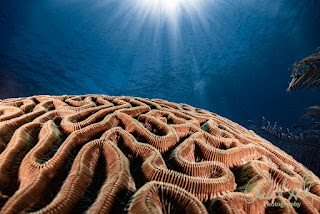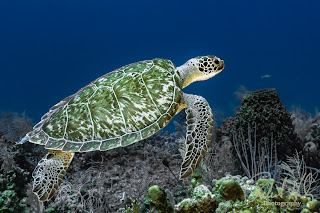The Lifeline of Underwater Photography: Selecting, Using, and Protecting Your Memory Cards with Top Durable Storage Solutions
As someone who loves capturing the wonders of the underwater world, I want to emphasize how important memory cards are for us underwater photographers. These tiny technological marvels silently hold onto all the beauty and mystery we encounter beneath the waves. But it's crucial to pick the right card, handle it with care, and always have a backup to avoid any frustrating setbacks. Let's chat about the importance of choosing, using, and protecting your memory cards to make sure your underwater photography adventures go smoothly and stay enjoyable.
Selecting the Right Memory Card
Types of Memory Cards
- SD Cards
(Secure Digital):
- Best For: SLRs,
mirrorless cameras, and some point-and-shoot cameras.
- Why: These cards
are versatile, widely compatible, and come in different sizes (standard,
mini, micro) to fit various devices.
- CF Cards
(CompactFlash):
- Best For: High-end SLRs
and professional mirrorless cameras.
- Why: Known for
their durability and high storage capacities, CF cards are built to
withstand more rigorous use.
- MicroSD Cards:
- Best For: Action
cameras like GoPros and some compact point-and-shoot cameras.
- Why: Despite their
small size, these cards offer large storage capacities, perfect for
capturing hours of high-quality video.
- Internal
Storage and MicroSD for Smart Phones (iPhone, Android):
- Best For: Smartphones
used for underwater photography with waterproof housings.
- Why: Internal
storage is fast and reliable, while some Android phones support
expandable storage via MicroSD cards.
Speed Ratings
Understanding speed ratings is crucial for ensuring your memory card can
handle the demands of underwater photography and videography.
- Class Rating
(Class 2, 4, 6, 10): Indicates the minimum write
speed. For underwater photography, Class 10 is a must for high-definition
video recording.
- UHS (Ultra High
Speed) Rating (U1, U3): U1 supports Full HD video, while
U3 is essential for 4K video recording.
- V Rating (Video
Speed Class - V6, V10, V30, V60, V90): This rating is especially
important for video recording, with V30 and above recommended for 4K and
higher resolutions.
Using Your Memory Cards
- Formatting:
- Always format
your memory card in the camera it will be used in. This ensures
compatibility and minimizes the risk of file corruption.
- Capacity:
- Opt for memory
cards with ample storage to avoid running out of space mid-dive. It's
better to overestimate your needs than to miss capturing a perfect shot
due to a full card.
- Speed:
- Ensure your
card’s speed rating matches your camera’s requirements. This is
particularly important for high-resolution photography and video
recording, where slower cards can cause lag and dropped frames.
Protecting Your Memory Cards
- Storage:
- Use protective
cases for your memory cards. These cases shield your cards from physical
damage, dust, and moisture—common hazards in underwater environments. (See below for examples of Memory Storage Solutions).
- Handling:
- Handle memory
cards by the edges to avoid touching the gold contacts. This reduces the
risk of static damage and physical wear.
- Keep your
cards away from extreme temperatures and direct sunlight, both of which
can damage the card’s integrity.
- Backup:
- Regularly back
up your photos and videos to a computer or external storage device. This
step is crucial to avoid losing valuable footage if a card fails.
- Spare Cards:
- Always carry
spare memory cards. Despite your best efforts, accidents happen. Having
backups ensures you won’t miss capturing those incredible underwater
moments.
Recommended Memory Cards for Various
Cameras
Here’s a detailed chart showing the recommended types and speeds of
memory cards for different cameras used in underwater photography:
|
Camera Type |
Recommended Memory Card Type |
Recommended Speed Rating |
|
SLRs &
Mirrorless Cameras |
SD, CF |
Class 10,
UHS-I/UHS-II, V30/V60/V90 |
|
Point-and-Shoot
(Sealife, Olympus) |
SD, MicroSD |
Class 10, UHS-I,
V10/V30 |
|
GoPro Cameras |
MicroSD |
UHS-I, U3, V30 |
|
Smart Cell Phones
(iPhone, Android) |
Internal Storage,
MicroSD (for some Android phones) |
N/A (internal),
UHS-I, V10/V30 (MicroSD) |
Conclusion
When engaging in underwater photography, it's important to recognize the vital role that your memory card plays. It's not just a storage device but an invaluable tool that safeguards your creativity and hard work. To ensure the best results, it is crucial to select a memory card that meets your camera’s requirements and to handle it with care. By taking these steps, you can effectively protect your underwater photography endeavors. Remember, your memory card is essential for your shoots, so it's important to treat it with the utmost care and respect.
With these insights and the updated chart, you'll be well-prepared to handle your memory cards professionally and ensure the safety of your underwater photography data. By keeping these tips in mind, you can continue to capture the breathtaking underwater world with confidence and ease.
Memory Storage Solution Examples
Below are just a few examples of Memory Storage Solutions that are available. I found these on Amazon.
1. Pelican
0915 SD Memory Card Case
- Features:
- Watertight and
crushproof.
- Holds up to 12
SD cards, 6 mini SD cards, and 6 micro SD cards.
- Made from
high-impact polycarbonate.
- Includes a
removable insert liner for added protection.
- Why It's Great:
- Pelican cases
are renowned for their durability and are trusted by professionals
worldwide. Featuring the tough, water-resistant case that Pelican
is known for.
2. Ruggard
Leda Memory Card Case
- Features:
- Water-resistant
and impact-resistant.
- Holds up to 12
SD cards and 12 microSD cards.
- Made from
polycarbonate resin.
- Comes with a
rubber seal to keep out water, dust, and debris.
- Why It's Great:
- Offers a good
balance of protection and capacity, making it ideal for various types of
memory cards.
3. JJC
36 Slot, Water-Resistant & Anti-Shock Memory Card Case
- Features:
- Water-resistant
and anti-shock.
- Holds up to 12
SD & 24 Micro SD cards.
- Made from
durable polycarbonate material.
- Easy open/close
snap lock.
- Why It's Great:
- High capacity
and excellent protection, suitable for photographers who need to carry
multiple cards.
4. Think
Tank Photo Pixel Pocket Rocket Memory Card Carrier
- Features:
- Water-resistant
nylon case.
- Holds up to 12
SD cards or multiple micro-SD or 6 CF or 6 XQD cards.
- Includes a
belt attachment loop and a lanyard for easy carrying.
- Why It's Great:
- Lightweight
and easy to carry, ideal for photographers on the move.
5. Eco-Fused
Memory Card Carrying Case
- Features:
- Soft nylon
mesh case with individual slots for 22 SD, micro SD, Mini SD, and 4 CF
cards.
- Lightweight
and compact.
- Zipper closure
for added security.
- Why It's Great:
- Affordable and
offers good protection for daily use.
6. Honsky
Aluminum Memory Card Case
- Features:
- Holds up to 8
SD, 8 micro SD, suitable for SD / Micro SD / SDHC / SDXC / TF cards.
- Made from
durable aluminum alloy.
- Anti-static
inner lining to protect against data corruption.
- Why It's Great:
- Sturdy and
sleek design, offering both protection and style.
Conclusion
Investing in a high-quality memory card case is essential for protecting your valuable data and ensuring your memory cards remain in perfect condition. Whether you need a rugged case for extreme conditions or a lightweight option for everyday use, there's a memory card case to suit. your needs. Choose one that fits your requirements and keep your memory cards safe and secure, so you can focus on capturing the beauty of the underwater world.
Stay Connected
Follow my blog for more tips and tutorials on underwater photography. Let's dive deeper into the art and craft of capturing the marine world!
Subscribe to my blog for more tips and tutorials on underwater photography. Don’t forget to share your processed photos on social media using the hashtag #RobertHerbPhotography. I look forward to reviewing your results.
New Online Training Program
I am excited to announce that I am creating an online training program to teach underwater hobbyists and enthusiasts how to enhance their photos using Adobe Lightroom. If you are interested in this training, please contact me at bob@robertherb.com to express your interest and to be notified about the details and start date of the classes.
Stay tuned and "Follow" for upcoming blogs on underwater photography tips and tricks for more in-depth insights. Please leave your comments and suggestions. Enjoy your diving and shooting experience!
I am eagerly anticipating your valuable feedback and suggestions.
Sincerely,
Bob Herb
|
|





Comments
Post a Comment
Please let me know your comments.